Our Chilean Adventure
p a n. This is a country of apparent bread lovers. Cake for breakfast, empanadas for lunch, a bread basket with every meal, and a panadería within a stone’s throw of anywhere you are. The bread is gorgeous, too, made fresh every day and perfectly crunchy- and soft-looking. Here in the southern part of the country, the food practices seem to combine a common South American Spanish influence with some German practices. I say this because the “rolls” have the exact look and smell of the “buns” my German American mother and grandmother made every week. I do not yet know what influence indigenous practices have on the bread here, if any. The area where we live has one of the largest Mapuche populations in the country, and I’m anxious to find out more about their everyday food.
I know I belong in this country because I, too, love bread. I
Ivy Ken
22 chapters
FOOD. primeras observaciones
Valdivia, Chile
p a n. This is a country of apparent bread lovers. Cake for breakfast, empanadas for lunch, a bread basket with every meal, and a panadería within a stone’s throw of anywhere you are. The bread is gorgeous, too, made fresh every day and perfectly crunchy- and soft-looking. Here in the southern part of the country, the food practices seem to combine a common South American Spanish influence with some German practices. I say this because the “rolls” have the exact look and smell of the “buns” my German American mother and grandmother made every week. I do not yet know what influence indigenous practices have on the bread here, if any. The area where we live has one of the largest Mapuche populations in the country, and I’m anxious to find out more about their everyday food.
I know I belong in this country because I, too, love bread. I
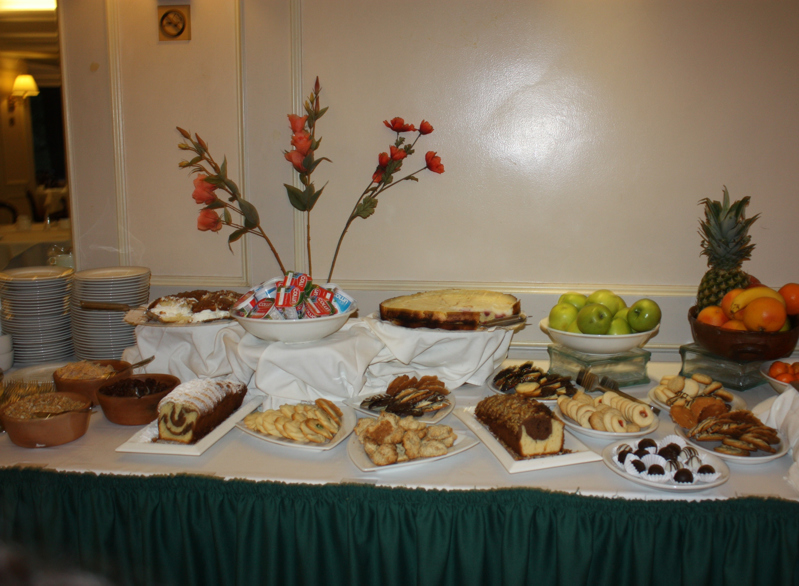
haven’t eaten it, though, since finding out I have a wheat allergy over three years ago. This makes breakfast, lunch, and stone throwing a little sad for me. Waaaaa. Because I gave in and ate some empanadas at the top of a mountain in Curiñanco last week and survived, though, I’m anxious to find out more about the wheat here. My naturopath tested me for various wheat proteins and only one was problematic. It’s possible that the varieties of wheat here are low in that protein. It’s also possible there’s a Roundup aspect to the puzzle, although I eat tons of Roundup-treated corn products and sugar. There is also precious little fermented food here, as far as we can tell so far. A good dose of this my daily diet may be all I need to counteract the milder effects of the wheat here, so as soon as we have a place to live, expect to see endless pictures of our fermented concoctions.
v e n d u r a s y f r u t a s. Whole food. That’s what’s available here. These little fruit and vegetable stands are everywhere. The celery is huge. The carrots are mammoth. It
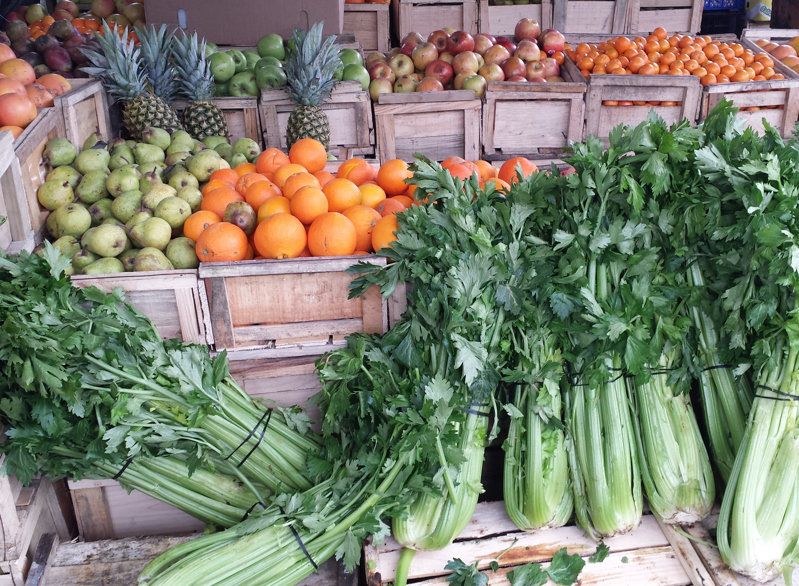
all costs next to nothing. And people seem to stop by here each day to get their daily allotments. We do! Io has three loose teeth so she isn’t crunching on much these days, but Idris asks for one of these huge carrots every day. I can’t wait until we have a kitchen and can actually cook with all these fresh delights.
I’ve tried to watch to find out where the food comes from. So far, I’ve only seen individual crops coming in, like this potato truck. The truck makes a stop at each of the produce stands, dropping off a couple bags at each. (We happened to be walking around town and very luckily saw this particular truck stop three times.) Some of the produce comes in boxes with labels, so I’ll be tracking those farms or brands down in the coming weeks.
c a f é. No coffee. No flipping coffee. I spoiled myself by drinking cappuccinos in Miami while we were laid over there. (For some reason, mostly having to do with memories of spending time with my bff Marina, I believe Miami is the best place
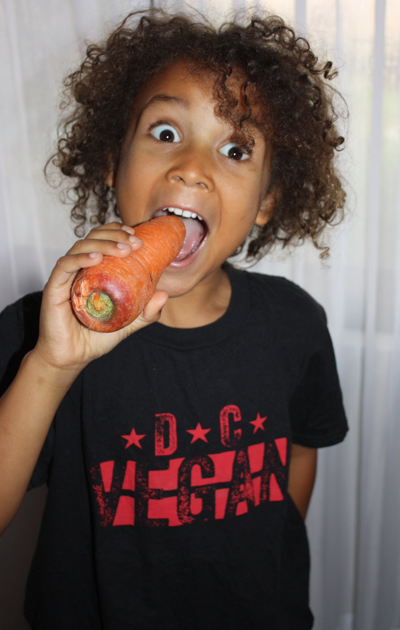
in the world to drink cappuccino, and nothing any of you Italian travelers can tell me will change my mind.) And then we got here, to the land of the horrid Nescafé self-serve machine. Yuck. Yuck. Yuck. We have spent the better part of many days searching around town for a doggone cup of decent coffee, and even when we find a place where humans make the coffee or espresso themselves, they put some sort of awful caramel or almond syrup in it (can’t tell the difference) when you foolishly ask for “café con leche.”
In the one place where we managed to find a really good cup, they served it in a cup that looks like this. This image is a new one for me. (Again, you
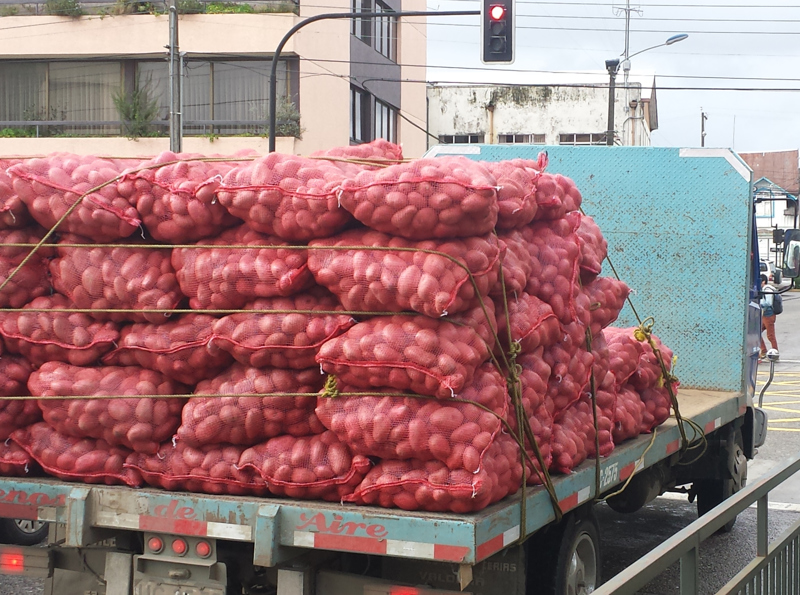
Italians, where the brand seems to originate, may have something to add here – this time I’ll listen.) It has many of the tell-tale signs of typical white-produced racist artifacts: a Black man outsized, with bare feet, in clothes that don’t fit, bearing a huge, toothy smile. I don’t know what to make of it – if there’s some cultural context I don’t know or if (any chance?) this is the owner of the company or something. I know, I know, I’m grasping. For now, rather than consuming our coffee with a side of racism, we just steer clear.
The only saving grace on the topic of coffee is that I haven’t really “needed” it since we’ve been here anyway. The rhythm of the day here doesn’t require it. The sun rises late since it’s winter. There are after-lunch naps (due to during-lunch drinks), and I found out the hard way that a cup of coffee around 5PM after a post-lunch nap is a bad idea. So again, when we have a kitchen, we’ll make a pot for pleasure in the morning and let that be that.
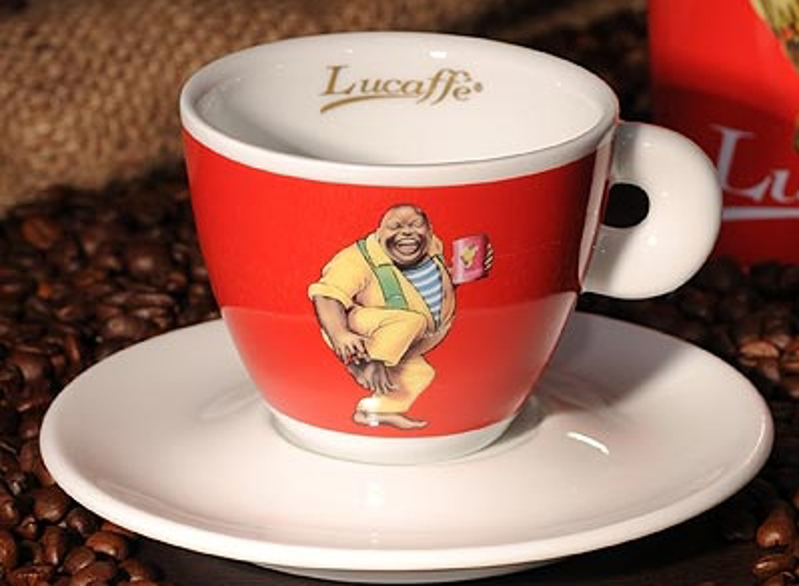
p i s c o s o u r s. It’s the national drink. It’s delicious. I had fully expected not to like it. I’m not much for brandy, preferring a stiff, sour margarita to almost anything. But on our second day in Santiago we walked to the Mercado Central and roamed around the adjoining streets until we got hungry and stopped in one of the million little restaurants there, and I ordered one there. (Did I mention the lunchtime drinking here?)
I’m converted.
It was absolutely divine. It had a little meringue-kind-of-thing on the top, and it was sprinkled with freshly ground nutmeg. I will admit that I’ve ordered the drink at many restaurants
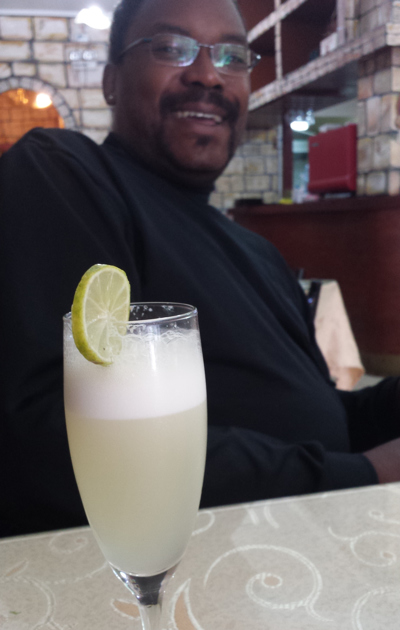
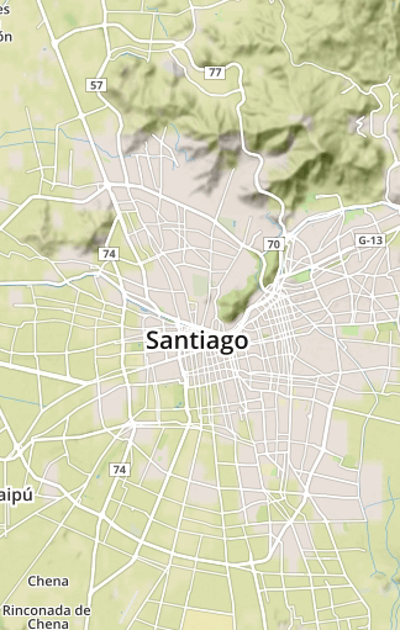
since then, and none has matched that very first one. Because I am determined and strong-willed, I will continue the search.
s i g n o s d e c o k e. One of my students once asked another professor to help her with a research project she was working on. She told the professor she was analyzing how congressmembers talk about a particular topic, but she was also “listening for the silences.” In other words, she wanted to know what they said and also what they didn’t say. The professor was incredulous, saying it was absurd to think she could study something that wasn’t there.
Silences, though, are very revealing (right, Adrienne Rich?). True, one has to imagine what might be there in order to analyze what’s not. But that’s easy enough in cross-cultural perspective.
The silence I’ve noticed here: Coke signs. I’m so used to seeing them in the States that I don’t see them. And when they’re not there, it’s really noticeable. The distinct lack of visual pollution is so lovely here. You look out and see mountains. You see sea lions loafing on floating docks. You don’t see ads. I’m not saying there’s not one single ad in the whole town or country. I’m just saying they’re not a thing. They are blissfully silent, not screaming at me to Refresh! myself with a little caramel-colored high fructose corn syrup.
Speaking of this liquid abomination let me tell the truth and shame the devil: I do love Dr. Pepper. I wish I didn’t. I do. And guess what – there’s none here. Hallelujah! (Why does pop make me dip into my iglesial rhetoric?) There’s some other horrid red thing here called Bilz that holds no appeal. But the other day, I finally did see some Dr. Pepper – not with the Bilz or the Coke, but down on the bottom of a very odd assortment of items that seem to be united under the category of “sort of naughty and yucky.” I left it where it was.
m u c h o m a s. There’s much, much more to say on food. And I will. Next installment: the fish market.
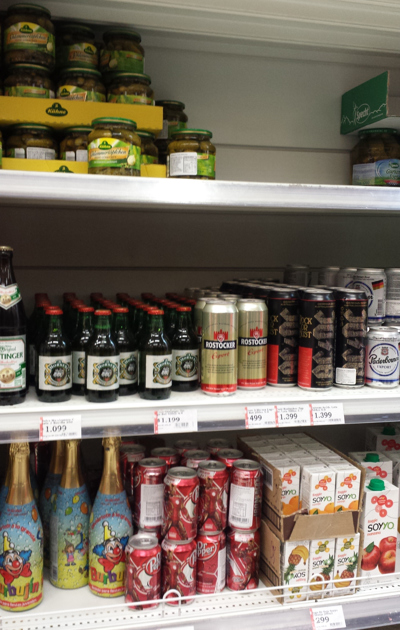
1.
At the Consulate in DC
2.
Bus Reservations Stress Me Out
3.
Small
4.
Getting What You Asked For
5.
First Days in Valdivia
6.
Ridiculous Goodness
7.
FOOD. primeras observaciones
8.
Temas Fotográficos de Idris: colillas
9.
Our Bearings: they have been found and embraced
10.
A Dad Who Listens
11.
Two words for you: aguas calientes
12.
Temas Fotográficos de Idris: hongos
13.
Time for Poetry
14.
Hiking Parque Oncol
15.
Green Eggs sin ham
16.
When it Rains it Hails
17.
Generosity
18.
The Unique Foods of Southern Chile
19.
Pucón
20.
La Playa
21.
Bonus Book Review
22.
Chile Wrap Up